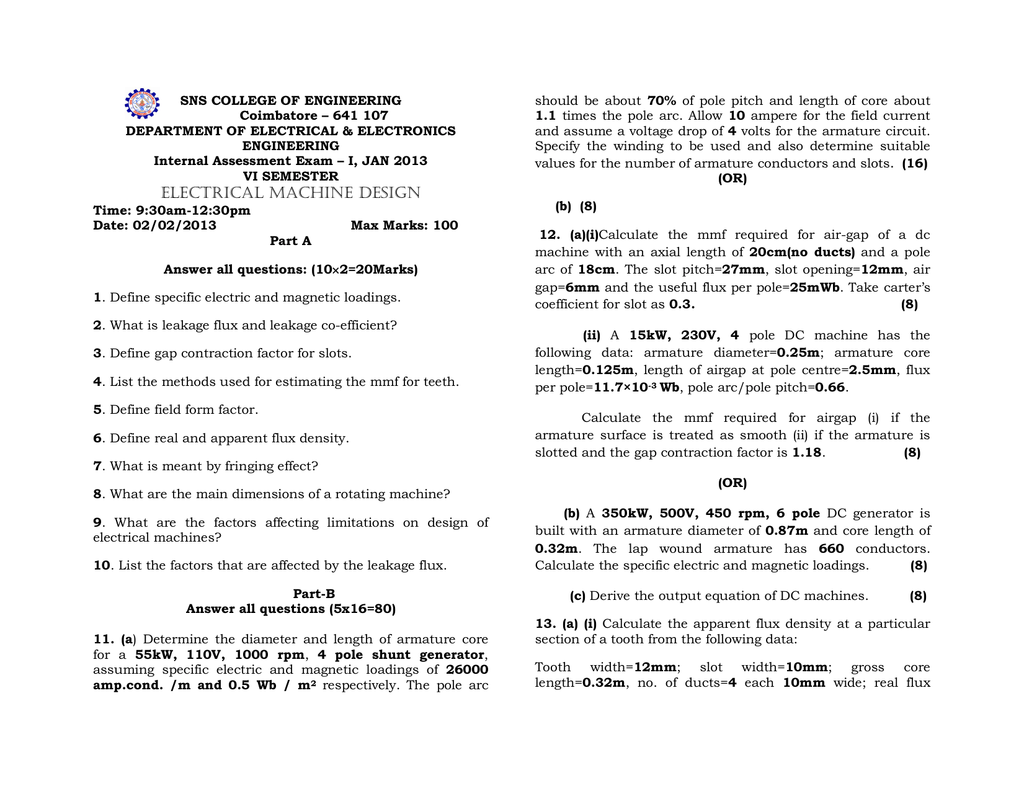For A 5kw Dc Motor The Number Of Slots Per Pole Should Be
If the number of slots per pole per phase 𝒒𝒒= 𝑺𝑺 𝒎𝒎𝑷𝑷. Is an integer, then the winding is called an. Integral-slot winding in case the number of slots per pole per phase, q is not an integer, the winding is called. Fractional-slot winding. For example a 3-phase winding with 36 slots and 4 poles is an integral slot. To avoid pulsations and oscillations of the flux in the air gap, the number of slots per pole should be a whole number plus half. When this is not possible or advisable for other reasons, the number of slots per pole arc should an integer. Number of teeth/pole shoe = 5 and flux passes through 5 teeth. The motor that drives these toys is nothing but a permanent magnet DC motor or PMDC motor. These types of motors are simple in construction. They are commonly used as a starter motor in automobiles, windshield wipers, washers, for blowers used in heaters and air conditioners, to raise and lower windows – and they are extensively used in toys. . Slot contains even number (may be 2,4,6 etc.) of coil- sides in two layers. Double-layer winding is more common above about 5kW machines Two coil –sides per slot 4-coil-sides per slot Coil- sides Coil- sides Coil - sides Overhang.
| Frequency | Number Of Poles | ||||||||
|---|---|---|---|---|---|---|---|---|---|
| 2 | 4 | 6 | 8 | 10 | 12 | 14 | 16 | 18 | |
| 60-cycles | 3600 | 1800 | 1200 | 900 | 720 | 600 | 514 | 450 | 400 |
| 50-cycles | 3000 | 1500 | 1000 | 750 | 600 | 500 | 428 | 375 | 334 |
where
RPM = shaft rotation speed or revolutions per minute
Hz = frequency or cycles/sec
Poles = number of poles of your motor.

So, for example, if you have a 4 pole motor on 60 Hz then RPM=60*(2/4)*60=1800 rpm.
60Hz is the most common frequency in the US
50Hz is the most common frequency outside the US
- Pole pitch: It is defined as number of armature slots per pole. For example, if there are 36 conductors and 4 poles, then the pole pitch is 36/4=9.
- Coil span or coil pitch (Ys): It is the distance between the two sides of a coil measured in terms of armature slots.
- Front pitch (Yf): It is the distance, in terms of armature conductors, between the second conductor of one coil and the first conductor of the next coil. OR it is the distance between two coil sides that are connected to the same commutator segment.
- Back pitch (Yb): The distance by which a coil advances on the back of the armature is called as back pitch of the coil. It is measured in terms of armature conductors.
- Resultant pitch (Yr): The distance, in terms of armature conductor, between the beginning of one coil and the beginning of the next coil is called as resultant pitch of the coil.
+Basic+operation%3A+(cont…).jpg)
Lap winding and Wave winding

For A 5kw Dc Motor The Number Of Slots Per Pole Should Be Lowered
